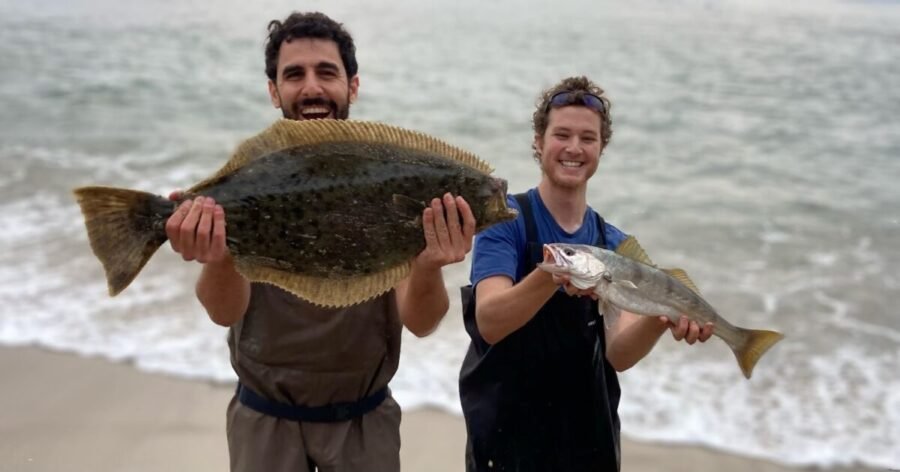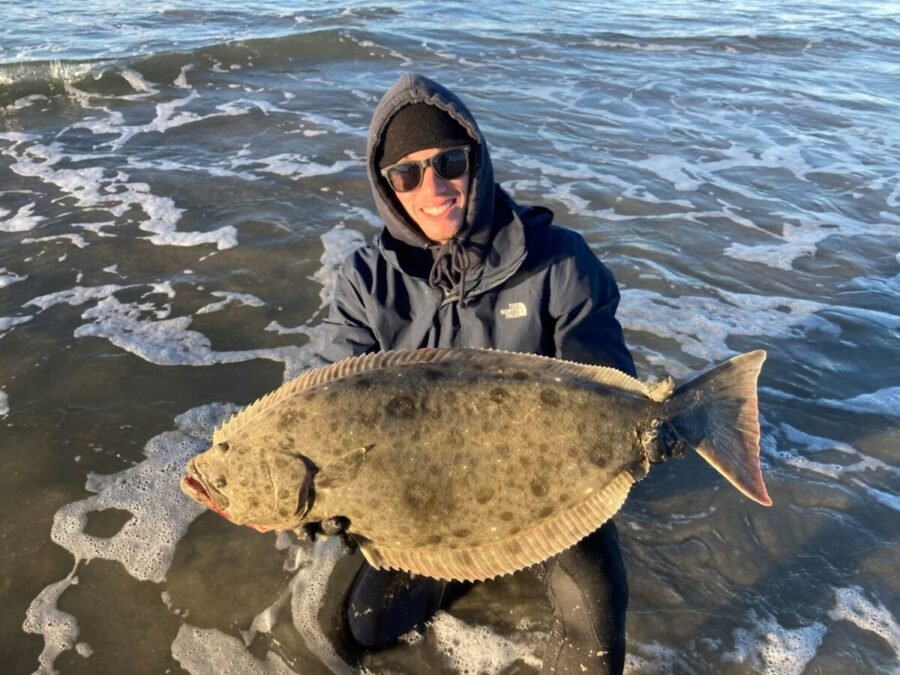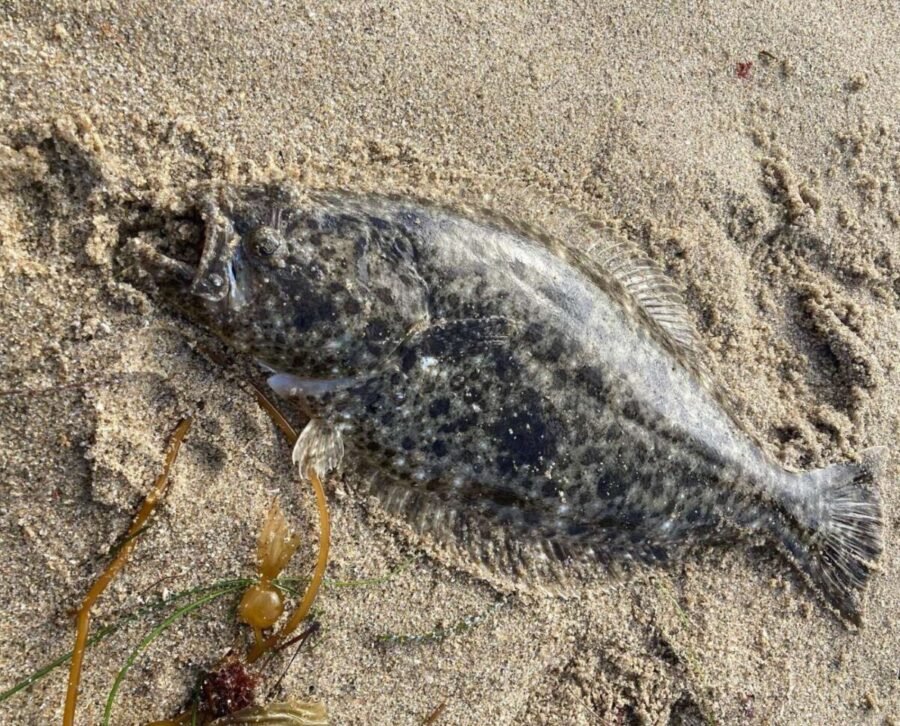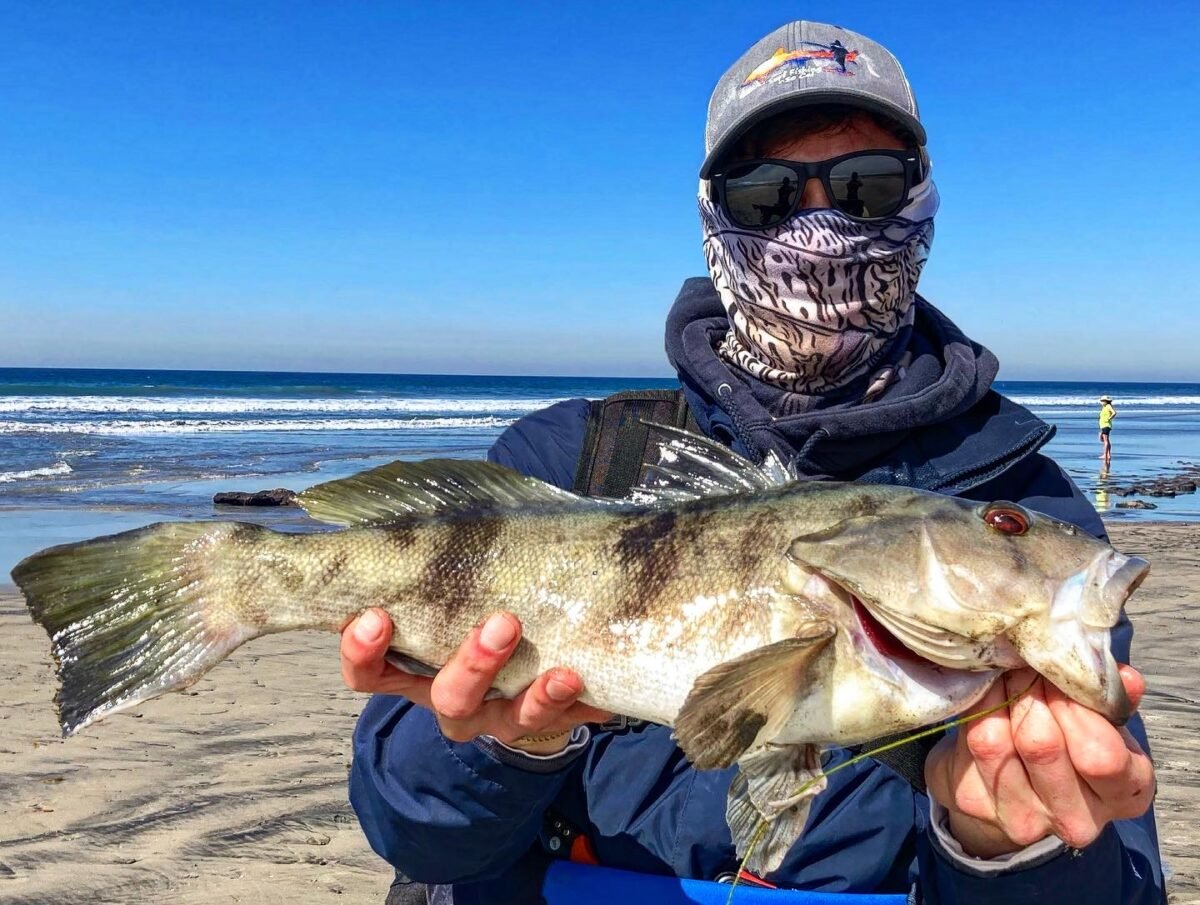Sight Casting for Halibut: Hali’s Jumping Out of the Water!

Have you ever seen a halibut jump out of the water. A little more than three years ago, I saw a halibut go airborne for the first time. I was fishing for surfperch in early April of 2019 and the water was teeming with baitfish.
Out of nowhere, I saw a white flash as a fish jumped clean out of the water. As it rotated through the air, that white flash turned into brown before disappearing into the water once more. A flying halibut! Could it be?
Within the next hour, I witnessed this another six times. I’d switched over to throwing my Lucky Craft FM 110 hoping that might spark a bite. I’d sight casted for corbina and spotfin croaker before, but this was much different.
Why Do Halibut Jump Out of the Water?
I didn’t hook up that day, but I did the next day on a few blind casts in the same area. Since then, I see this type of behavior often in halibut. There’s a strong correlation with this type of behavior during grunion runs because of the abundance of bait in the water.
So why do halibut jump out of the water? Aren’t they supposed to be on the bottom? It’s true that halibut spend much of their time on the bottom, but they are NOT bottom feeders. They use their unique shape and eye-positioning to camouflage themselves with the seafloor and they wait. When their prey (usually small fish) swims over them, they ambush from below, often times jumping completely out of the water in the process.
These attacks are actually very similar to the way great whites attack seals. While great whites are constantly moving and stocking their prey, halibut lay stationary and attack more opportunistically. For more on halibut fishing in general, this article will walk you through learning how to fish for halibut in the surf.
Can You Sight Cast For Halibut?

Sight casting for corbina and spotfin is one thing, but sight casting for halibut… Could it be done? Instead of stocking my prey from afar and waiting to camouflage my cast in the white water of a rolling wave, I’d be spotting fish as they broke the water’s surface and casting behind them, hoping my ensuing retrieve would catch their eye (and appetite) as I rolled my lure right over their heads.
For years, when I’d see this type of behavior, I couldn’t resist casting and trying to hook them via sight, but as hard as I tried, nothing worked. They were finicky. That is, until a couple weeks ago when this happened. Take a look at the video below and you’ll see at least two successful sight casts for halibut after they breached the water’s surface. Between myself and a buddy, we sight casted successfully for halibut four times that day.
Gear and Tackle Used in the Video
I’ve been trying an abundance of different swimbait and hooks/jig-heads so expect an in-depth review for each of those soon. Meanwhile, here’s what I used in the video.
- Rod: Okuma SST-S-902HA – 1/2-2oz | 10-30lb | 9ft | H | MF
- Reel: Penn Spinfisher VI 4500
- Line: 30-pound braid
- Leader Line: 50-pound mono
- Lure: BioSpawn Exoswim Paddle Tail Swimbait (4.75 inch)
- Hook: Z-Man TT Lures ChinlockZ SWS Swimbait Hook (4/0, 1/6 oz)
- Hook (option #2): Mustad UltraPoint KVD Weighted Grip-Pin Swimbait Hook (4/0, 1/8 oz)
How To Sight Cast for Halibut
Sight casting for halibut can be a productive means of targeting halibut, but like all sight casting, fish are finicky and don’t always bite.
First off, I’d never recommend that any angler head out for a session, walking along the shore, waiting to see a halibut jump out of the water. Heck, I rarely head out to strictly sight cast for corbina and spotfin croaker.
I’m all about fishing to the conditions so if I see fish in the shallows, or if I see fish jumping (or birds diving), I react and fish for what I think I have the best shot at catching. The same is true when I see a really juicy deep pocket of water that looks like it would hold spotfin croaker, yellowfin croaker, corbina and other common species of coastal fish.
Find the Bait
I will say, your best bet at seeing halis jumping out of the water is to find the bait. Bait fish are actually relatively easy to spot in the water. You’ll often find them in and around troughs, holes, deep pockets, and rocks.
Try Multiple Retrieves
When you finally do find an area where halibut are clearly staged and smashing bait on the surface, cast just beyond where you’re seeing them jump. As your lure approaches the zone, slow your retrieve.
I’ll switch things up with a subtle twitch or a slow and steady retrieve until something hits. You can also try changing from swimbaits to jerkbaits and vice versa. Sometimes all it takes is a different color lure too.
Setting the Hook
When your sight casting for anything, you’re typically casting relatively shallow. With that said, if you set the hook straight on, with a standard “up-swing”, you’ll run the risk of pulling the hook. This is because with short casts, you create a much wider angle from you to the fish, and if you set the hook upwards, you might pull the fish out of the water (or at least toward the surface).
For anybody who isn’t familiar with the physics of water-weight vs weight out of water, fish essentially get heavier and often initiate violent headshakes when you pull them upward and out of the water. For this reason (and anytime you have a fish close to shore), you should keep your rod tip low and keep your movements steady and smooth.



